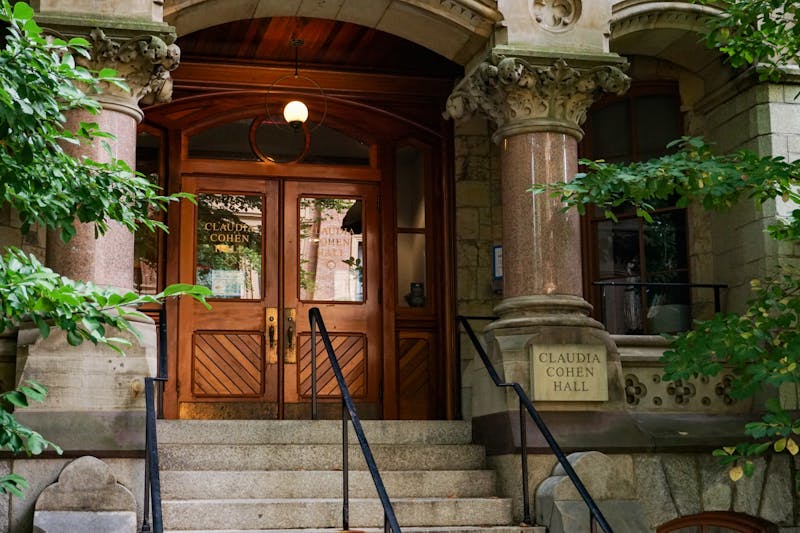Vice President for Public Safety Thomas Seamon announced on Friday that he will step down after five years of running Penn's police and security operations. The former deputy commissioner of the Philadelphia Police Department will leave at the end of the month to become the CEO of TrainLogic, Inc., a security training and consulting company based out of Blue Bell, Pa. "I'm really going to miss him," said Executive Vice President John Fry, who led the search that originally brought Seamon to Penn. "Tom definitely had one of the hardest jobs on this campus, [and] he weathered it like a real gentleman." University Police Chief Maureen Rush will run the division until administrators find a permanent replacement, for which she seems to be a front-runner. Officials said they envision finding Seamon's successor by January 1. "I'm proud of what Public Safety is today, I'm proud of the people there. It's one of the best organizations of its kind in the country," Seamon said. "It's very difficult to leave but I think the division's in good hands." Seamon leaves behind a department in markedly better shape than the one he inherited in the fall of 1995. A new state-of-the-art headquarters, a double-digit percentage decrease in nearly every category of crime and a larger, more professional police force were among his biggest achievements. But he was not particularly adept at handling his division's image, and was unpopular with women's groups around campus. "Certainly there were times when people disagreed with his stance on things... it goes with his position," acknowledged Rush, who also credited Seamon's management skills. But "ultimately you have to do what's best for the University." As head of Public Safety, Seamon presided over the University Police, Special Services, Security Services and the Office of Fire and Occupational Safety. The division has been guided for the past 4 1/2 years by Seamon's "master security plan" -- drafted in the spring of 1996 -- which called for many improvements in how its employees do their jobs and the tools they use to do so. "The Public Safety division today is much expanded and much improved from what I found five years ago, [but] I can't take personal credit for that," Seamon said, explaining that the entire staff has played a role in the turnaround. One of the most important accomplishments under Seamon's watch was the opening of a new headquarters at 4040 Chestnut Street in 1997. The former warehouse which Penn paid $3.5 million to buy and renovate consolidated the entire Division of Public Safety into one location. Before then, Penn Police worked out of what is now Civic House in Hamilton Village, and other departments were scattered across campus. The centralized location, Rush said, allowed Seamon to create "a synergy that when you're in multiple buildings you would never have built." Public Safety has also become increasingly technology-focused over the past five years, which was another one of Seamon's goals when he arrived at Penn after 26 years with the Philadelphia Police. It has also built better relations with the Philadelphia Police and other area private security provide. And the number of sworn police officers on the force has grown about 25 percent -- making it the largest private department in the state. Perhaps most importantly, crime is down across the board on and around campus. "There was certainly very severe crime problems around Penn," Seamon said. "It was a tough uphill battle." Seamon's tenure has been rocky at times. A year after his arrival, a massive crime wave rocked the Penn campus, culminating in the shooting of a student walking home one night from Smokey Joe's and the stabbing death of a Penn researcher at 47th Street and Larchwood Avenue. After an outcry from students and parents -- and a significant drop in early decision applications -- Penn launched an ambitious multi-front attack on crime, which included everything from more lighting on area streets to building hubs of activity along Walnut Street like Sansom Common. According to Fry, Seamon's ability to stay calm and direct helped the University salvage its reputation. "He was the calm in the middle of the storm and we had a few storms along the way." Fry added that Seamon was one of the driving forces behind attracting more retail to campus. "He kind of opened my eyes to safe streets [being] streets filled with people," Fry said. Seamon has also been criticized for inattention to issues of women's safety and for reducing the jurisdiction of Special Services, which was formed in the 1970s after a series of attacks on women. Rush, also a veteran of the Philadelphia Police Department who has run the Penn Police since 1996, said yesterday that she is interested in the job. "I will have an opportunity to see how the position feels" as the interim head, she said. "Certainly I'm open to it." And Fry said he has "enormous confidence" in Rush. Seamon becomes the second major Public Safety official to leave this semester. Last month, Director of Security Services Stratis Skoufalos was essentially laid off when Penn restructured his department.
The Daily Pennsylvanian is an independent, student-run newspaper. Please consider making a donation to support the coverage that shapes the University. Your generosity ensures a future of strong journalism at Penn.
DonatePlease note All comments are eligible for publication in The Daily Pennsylvanian.







